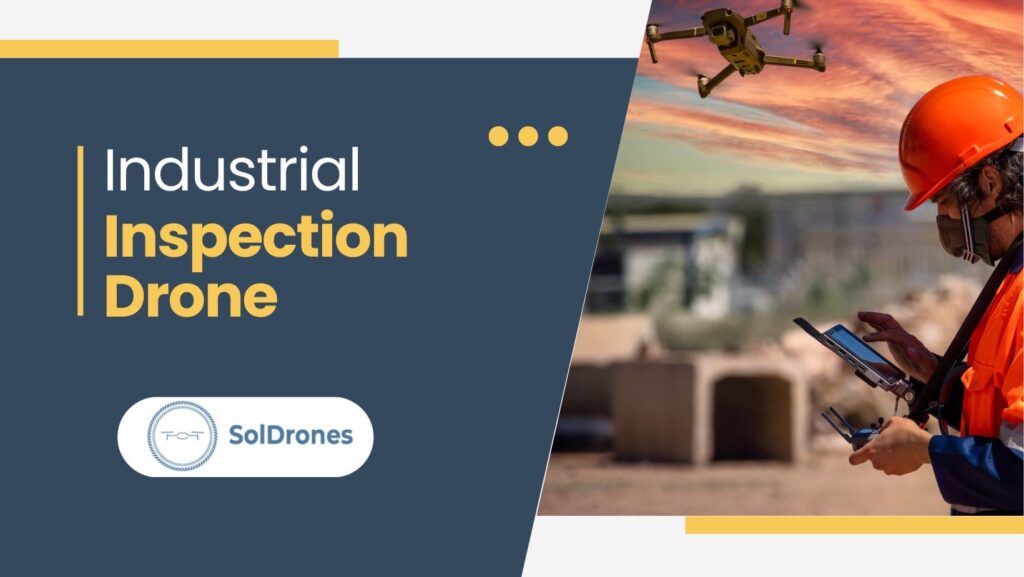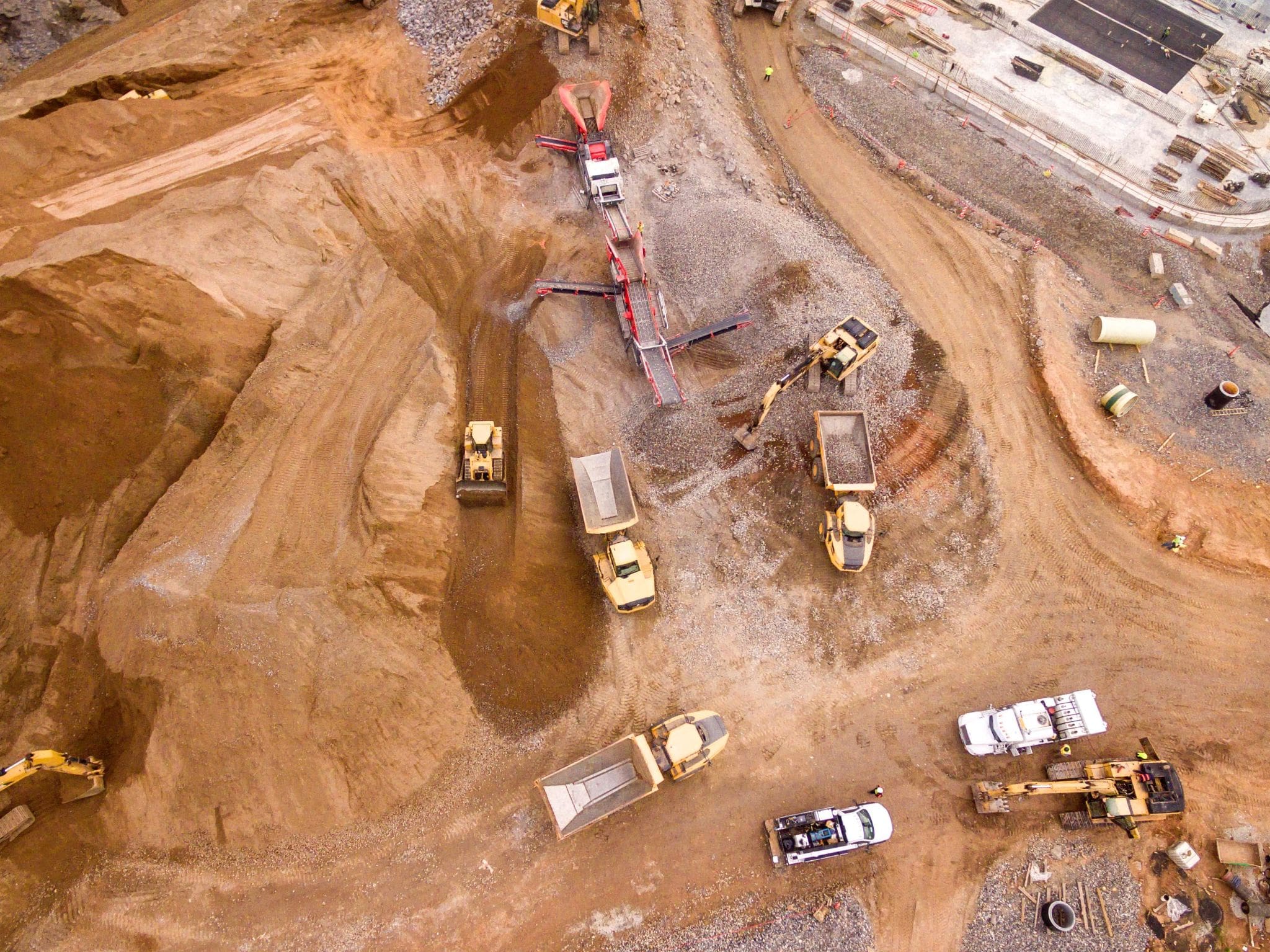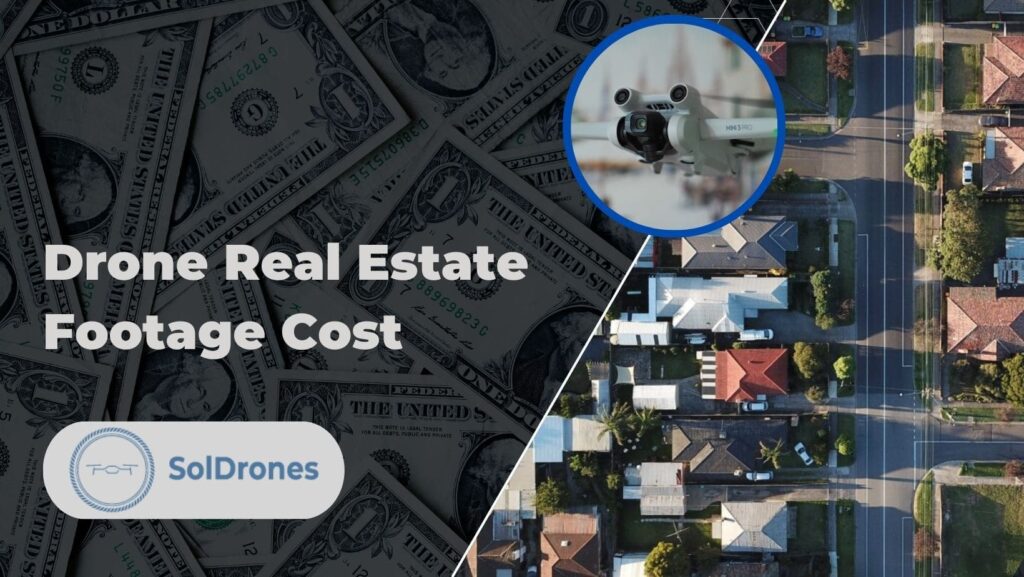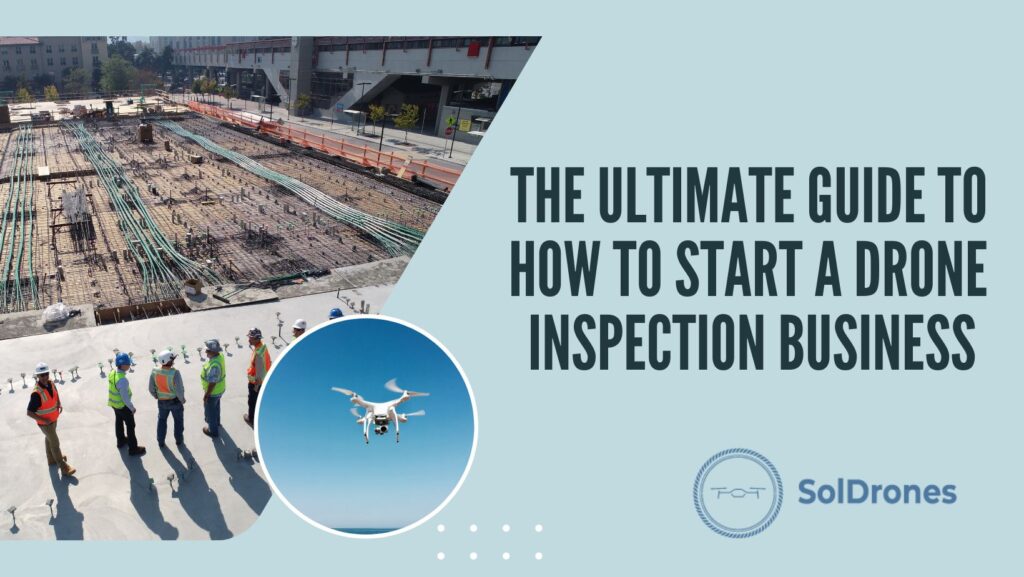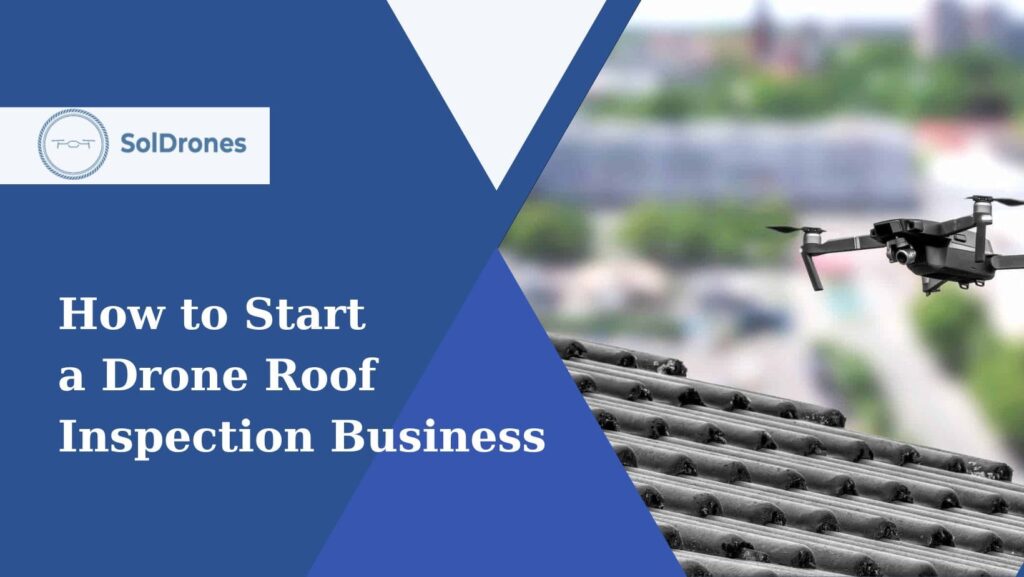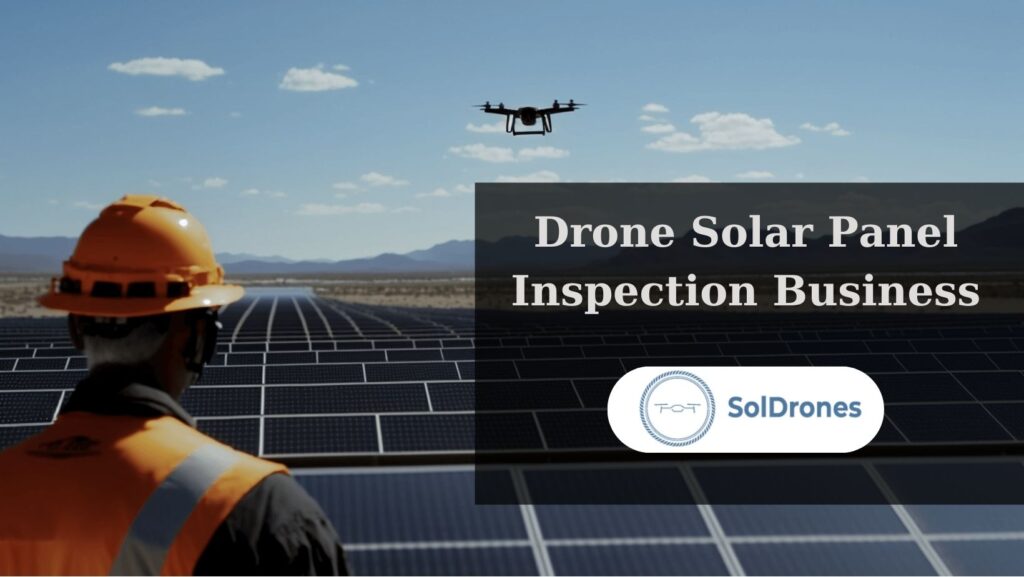Picture this: You’re an industrial manager, and you’ve got miles of power lines, pipelines, and a dozen bridges that need inspection. The traditional methods you’ve been using are time-consuming, risky, and outdated.
Then, you purchase your first drone and almost immediately start seeing the benefits, such as lower overhead costs and faster inspections.
This is the reality for drone entrepreneurs and industry professionals who choose to incorporate unmanned aerial vehicles (UAVs) into their operations.
This article isn’t just about drones; it’s about revolutionizing how you think of industrial asset management.
Drones are becoming the secret weapon for industries ranging from utilities to oil and gas, telecom, and infrastructure.
With high-fidelity computer vision data advancements, drones are becoming the secret weapon for industries ranging from utilities to oil and gas, telecom, and infrastructure.
We’ll unpack the decision criteria you should consider when selecting a drone for industrial inspections, but this brief video created by UAVISUALS overviews some of the top models in recent years:
Video Credit: UAVISUALS
By the end of this article, you won’t just grasp why drones are disrupting industrial inspection; you’ll also have the insight to choose the suitable drone, service, or pilot for your needs.
Article Highlights:
- Advanced sensors like LiDAR, hyperspectral, and thermal imagery capture intricate data details, providing insights unseen by the human eye.
- Machine learning algorithms process the data in real-time, highlighting anomalies and trends.
- Proper selection of drone technology and partnering companies is crucial for optimal results in specific sectors.
Advantages of Using Drones for Industrial Inspections
In the age of digital transformation, industrial inspections are no longer a brute-force game of workforce and caution tape.
Welcome to the era where drones take center stage, addressing some of the age-old challenges in the industry. Let’s explore the sweeping advantages of deploying drones for industrial inspections:
- Time and Cost-Efficiency: Say goodbye to the days when inspections took weeks, even months. Drones can complete a comprehensive site survey within hours. Forget about the steep costs of deploying human crews; drones lower the financial barrier of routine inspections.
- Employee Safety: The higher the risk, the higher the stress — that’s been the mantra of traditional industrial inspection. Drones alter this equation, performing risky tasks like high-altitude inspections and confined space evaluations, keeping your employees’ boots on the ground and their stress levels low.
- High-Fidelity Data Collection: Drones aren’t just cameras with wings; they’re robust data collection platforms. Equipped with sensors from thermal imaging to LIDAR, drones capture multi-dimensional data far superior to what the human eye can perceive.
- Case for Sustainability and Environmental Benefits: A lesser-known yet impactful advantage is the environmental footprint—or lack thereof—that drones leave behind. Lower fuel consumption than traditional heavy machinery and minimal ground disturbance make drones a greener choice for industrial tasks.
There’s a reason why drones are not a fad but a seismic shift in industrial practices. They’re not merely a cool gadget flying around but a strategic asset delivering measurable ROI, safety improvements, and a cleaner environmental profile.
By now, the question isn’t whether you should incorporate drones into your industrial inspection routines but how soon you can.
Use Cases for Drones in Industrial Inspection
The advantages of drones for industrial inspections sound compelling. But let’s get down to brass tacks: How are drones employed in various industries to make a tangible difference?
Below are some noteworthy use cases demonstrating drone technology’s expansive utility and efficacy in the field:
| Application/Area | Advantage/Feature |
| Inspecting Power Lines and Utility Poles | Ability to hover at great heights and capture intricate details, revolutionizing electrical grid maintenance. |
| Cost Savings | Reduced need for human labor, specialized equipment, and prolonged shutdowns offer a significant return on investment. |
| Inspecting Oil and Gas Pipelines | Perform quick, routine checks along miles of pipelines, including hard-to-reach offshore sites. |
| Inspecting Telecommunication Towers | Faster and safer inspections with high-resolution images, eliminating the need for high-risk climbs. |
| Disaster Response and Routine Maintenance | Quick and efficient solutions to assess and address challenges, whether due to natural disasters or routine checks. |
| Inspecting Bridges and Other Infrastructures | Frequent and in-depth structural assessments, providing early warnings for maintenance needs. |
| Avoiding Traffic Disruptions | Collect necessary data without road closures for road and bridge inspections, reducing community disruptions. |
| Safety and Savings | Reduction in workplace accidents and associated legal and financial repercussions by replacing human involvement in tasks. |
The applications of drones in industrial inspections are as diverse as they are revolutionary.
The potential for cost savings, increased safety, and operational efficiency is immense from utility sectors to public infrastructures.
Far from an emerging technology looking for a problem to solve, drones have proven they’re the right tool for many critical tasks.
Technologies Powering Industrial Inspection Drones
Drones aren’t just flying cameras; they are complex systems integrated with cutting-edge technology that empowers them to execute intricate tasks. Some of the key technological features to pay attention to when selecting a drone for inspections include:
- High-Resolution Cameras: Imagine having an eagle’s eye that can zoom into minute details from a considerable height. That’s what high-resolution drone cameras do, providing unparalleled visual data for inspections.
- LiDAR: Light Detection and Ranging (LiDAR) enables drones to map a three-dimensional terrain view. This is vital in industries like forestry, geology, and environmental research.
- Hyperspectral and Thermal Imagery Sensors: These sensors capture data beyond what the human eye can see, revealing temperature fluctuations or chemical compositions. For industries like agriculture or emergency response, this information is critical.
- GPS and “Detect and Avoid” Technology: Safely navigating the airspace is crucial. Advanced GPS systems provide pinpoint accuracy, while “detect and avoid” technology ensures that drones can steer clear of obstacles autonomously.
How to Choose the Right Industrial Inspection Drone Company
When it’s time to pick the right industrial inspection drone company, you’re not just shopping for hardware; investing in a partner for progress. The first criterion to weigh in is the technology they offer. Can their drones deliver high-resolution images and precise data analytics?
Safety features shouldn’t be an afterthought but a prime consideration. Does the company offer advanced “detect and avoid” capabilities? How about emergency landing features? These can make a massive difference in mission-critical operations.
Pay attention to the AI capabilities, too. These functionalities will convert raw data into actionable insights, saving your firm time and resources. Are drones smart enough to interpret data in real-time? And, just as you would only buy a car by reading reviews, the same should apply here.
What do actual customers have to say about their experience with the drone company? Are they solving real-world problems or just offering pretty gadgets?
Finally, have a set of questions ready before taking that partnership plunge. What is their experience in your specific industry? Can they customize solutions to fit your unique needs? A drone is only as good as the support and technology backing it. Choose wisely.
Report Templates and Data Analytics
One of the often overlooked elements in drone inspection is the report template. Yet, it’s a linchpin that converts raw data into a compelling action plan. A typical industrial inspection drone services report might encapsulate high-res images, thermal scans, and 3D mapping outputs.
This template doesn’t merely serve as a post-operation debrief; it’s a vital tool for predictive maintenance. These reports are the underpinning of data analytics that go beyond simple imaging. They can identify stress points, material degradation, and other early indicators of potential malfunction.
Now, let’s remember the power of real-time decision-making. Advanced drones can stream live data back to command centers, which can be immediately analyzed. This means immediate responses can be made, minimizing downtime and maximizing operational effectiveness.
The takeaway here is simple yet impactful. The correct reporting and data analytics can distinguish between a reactive and a proactive industrial operation. These tools aren’t just for post-mortem analyses; they’re the pulse of your operation.
ROI: Measuring the Financial Impact
When discussing drones in industrial settings, the conversation often orbits around the technology and capabilities. Yet, the actual litmus test for any business venture is the Return on Investment (ROI). Calculating the ROI for drone inspection involves a multi-faceted approach, accounting for cost savings, efficiency gains, and safety improvements.
It’s not just about the upfront costs of the drone and its operating system. Consider the value of human lives saved from dangerous jobs or the man-hours reclaimed from tedious, manual inspections. Put a dollar sign on the reduced downtime thanks to predictive maintenance, and suddenly, the ROI picture becomes vivid.
The financial impact of using drones for industrial inspection is diverse and often compounds over time. You’re not just saving money today but investing in a more robust, agile, and resilient operation for tomorrow.
Learning Industrial Inspection with a Drone
Entering the industrial drone inspection sector is more complex than buying a drone and heading to the field. A foundational step is becoming a certified drone pilot. Acquiring this certification means getting intimate with flight controls, safety protocols, and relevant regulations.
Beyond just learning to fly, specialized training in industrial inspection techniques becomes crucial. This could involve specific courses in thermal imaging, LiDAR, or data analysis. Many drone pilots focusing on industrial applications undergo rigorous training programs to handle the complex scenarios they’ll face.
Regarding remuneration, the industrial drone inspection pilot’s hourly rate can vary widely, depending on experience, the complexity of the task, and geographical location. However, the specialization generally commands higher than more generic drone piloting roles.
A working understanding of your industrial sector’s specific regulations and compliance issues can also be a significant asset. Every industry, be it oil and gas, utilities, or construction, has its own set of rules that drone pilots must adhere to. Knowledge here not only minimizes legal risks but also increases your marketability in this booming sector.
Future Trends
The horizon of industrial drone inspection is buzzing with innovation. A significant trend to watch is the move toward fully autonomous drones. These advanced machines can conduct checks without a human pilot, minimizing and reducing costs.
On the horizon are drones equipped with even more sophisticated sensory technology. These developments will likely open up new use cases and markets, solidifying drones’ place as an indispensable tool in industrial inspection. The future, it seems, is not just up in the air—it’s zooming ahead at full throttle.
Final Thoughts
Navigating the realm of industrial inspection has undergone a seismic shift with the advent of drones. Drones are revolutionizing how industries operate, from cost and time efficiency to enhancing worker safety and collecting high-quality data. As technology advances, with high-resolution cameras and machine learning leading the way, the capabilities of these aerial devices are continually expanding.
The market is filled with specialized companies, each with its niche, making choosing the right partner wisely imperative. Equipped with smart analytics and offering measurable ROI, drones are not just a fleeting trend but an integral part of the industrial future. Whether you’re looking to become a pilot in this booming sector or are a decision-maker in your company, understanding this technology’s potential is invaluable.
The future is promising, with innovations in AI and autonomy pushing the boundaries. Drones are not just tools but game-changers, making them indispensable in various industrial settings. This is the golden age of industrial drone inspection, and it’s just the beginning. With the correct implementation and foresight, drones can offer substantial long-term advantages for industrial applications.
FAQs
What are the advantages of using drones for industrial inspections?
Drones provide several benefits: time and cost efficiency, improved employee safety, high-quality data collection, and a smaller environmental footprint. These advantages make drones compelling for various industrial applications, from utility inspections to monitoring oil and gas pipelines.
What technologies are commonly found in industrial inspection drones?
High-resolution cameras, LiDAR, hyperspectral and thermal imagery sensors, machine learning, and AI for data analytics, as well as GPS and “detect and avoid” technology, are key features in state-of-the-art industrial inspection drones.
How do I choose the right drone inspection company for my industry?
When choosing a drone inspection service, it’s crucial to consider several criteria, such as the technology they use, safety features, AI capabilities, and customer reviews. Also, feel free to ask potential partners specific questions about their services to ensure they meet your industry’s requirements.
What is included in an industrial inspection drone services report template?
A typical report from a drone inspection service will consist of high-resolution imagery, data analytics findings, areas requiring immediate attention, and predictive maintenance suggestions. This information is then utilized for real-time decision-making and long-term planning.
What is the average hourly rate for an industrial drone inspection pilot?
The hourly rate for an industrial drone inspection pilot can vary depending on the industry, location, and level of expertise required. However, rates often range from $50 to $150 per hour, and it’s essential to note that specialized certifications or experience in specific sectors can also influence the rate.

